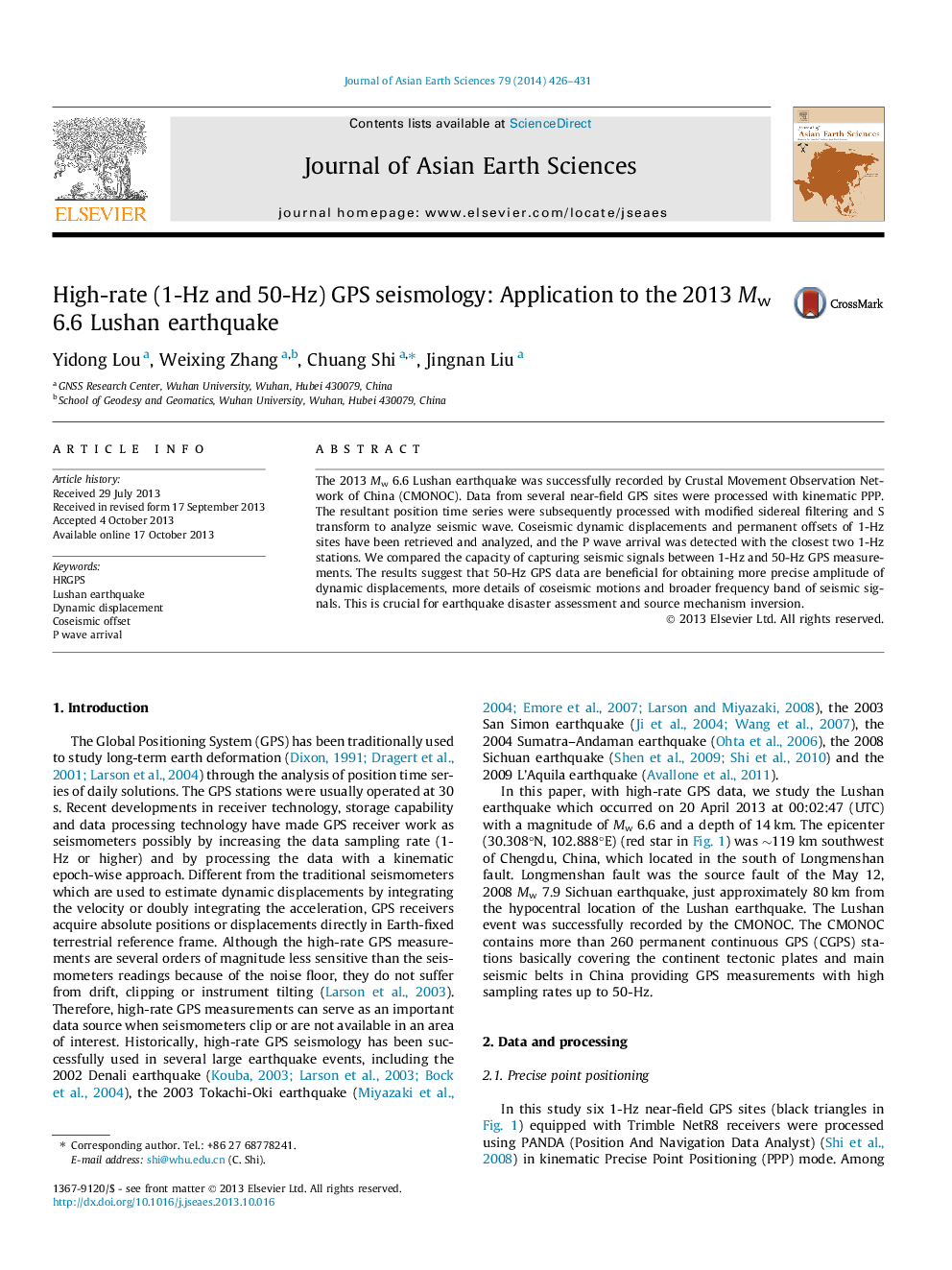| Article ID | Journal | Published Year | Pages | File Type |
|---|---|---|---|---|
| 4730918 | Journal of Asian Earth Sciences | 2014 | 6 Pages |
•1-Hz and 50-Hz GPS data from several near-field stations were processed.•Dynamic displacements and coseismic permanent offsets were retrieved.•P wave arrival was detected with the 1-Hz GPS sites.•The advantages of 50-Hz GPS measurements were verified.
The 2013 Mw 6.6 Lushan earthquake was successfully recorded by Crustal Movement Observation Network of China (CMONOC). Data from several near-field GPS sites were processed with kinematic PPP. The resultant position time series were subsequently processed with modified sidereal filtering and S transform to analyze seismic wave. Coseismic dynamic displacements and permanent offsets of 1-Hz sites have been retrieved and analyzed, and the P wave arrival was detected with the closest two 1-Hz stations. We compared the capacity of capturing seismic signals between 1-Hz and 50-Hz GPS measurements. The results suggest that 50-Hz GPS data are beneficial for obtaining more precise amplitude of dynamic displacements, more details of coseismic motions and broader frequency band of seismic signals. This is crucial for earthquake disaster assessment and source mechanism inversion.
